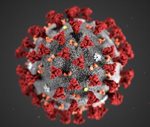Click on a link below:
|

|
COVID-19 Resources from Government, Academia, Publications and the Private Sector
National Resource Center for Refugees, Immigrants, and Migrants (NRC-RIM) provides assistance and resources to state and local health departments working with refugee, immigrant, and migrant communities that have been disproportionately affected by COVID-19.
INRC-RIM offers the following resources at its
website:
- A growing translated materials library with videos, posters, fact sheets and more on COVID-19 topics
- Community engagement, communications and contact tracing (CICT) toolkits with content specific to addressing the needs of RIM communities
- Resources that support vaccine planning, roll-out, knowledge, and confidence among RIM communities
- Culturally- and linguistically-relevant videos
- Training on stress and resilience for case investigators and contact tracers; additional training topics to be announced soon
ISTM's Professional Education Committee (PEC) has put together an online
PANDEMIC course of curated journal articles designed to help busy clinicians learn more about COVID-19. PANDEMIC course topics include:
- Epidemiology
- Clinical Course
- Severe Disease
- Therapeutics, and
- Personal Protection for Health Care Workers
Signup is still available for the London School of Hygiene & Tropical Medicine’s MOOC (Massive Open Online Course) on the about COVID-19, presented by international experts. The course started March 23, 2020.
Topics:
- How COVID-19 emerged and was identified
- Public health measures for COVID-19 worldwide
- What is needed to address COVID-19 going forward
Who is the course for?
Those working in healthcare or anyone interested in how we should respond to the outbreak.
Africa CDC's New Guidance on Community Social Distancing
Guidance on community social distancing during the COVID-19 outbreak to delay and reduce the magnitude of outbreaks of pandemic influenza. Highlights include:
- Acceptance of these measures can be improved by emphasizing personal/social responsibility and that social distancing is a means of protecting oneself.
- Public acceptance of social distancing measures will be facilitated by advertising them with an anticipated end date, but it should also be made clear that this could be extended if there is another wave of transmission.
- As much as possible, community social distancing should be implemented with community consent and by encouraging social responsibility through trusted authorities and channels. As a last resort, governments should review their laws at national and sub-national levels to ensure that they have the authority to implement community social distancing.
- Governments and public health agencies should identify trusted channels and actors to explain community social distancing measures and to listen to concerns and obstacles to community social distancing.
- Risk communication should consider different audiences (e.g. by including minority languages).
Additional Resources
U.S Government
Academic Institutions
Global Resources
Scientific Publications
Other Science Societies
- National Academy of Sciences, Engineering and Medicine
Private Sector
- Shoreland Travax, according to Managing Senior Director and ASTMH member David O. Freedman, MD, FASTMH, FIDSA, FISTM. Click on "Coronavirus Disease 2019 Information" at the top of the page.
